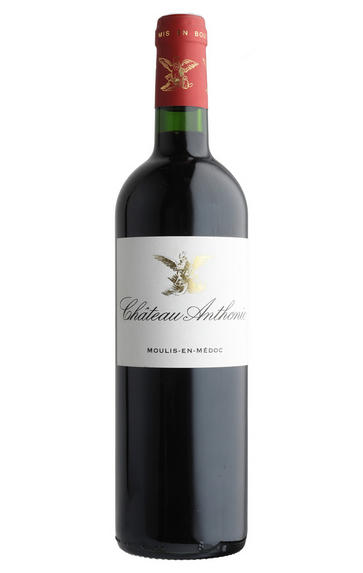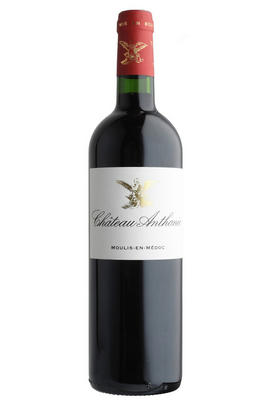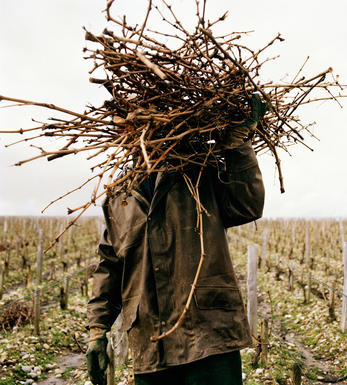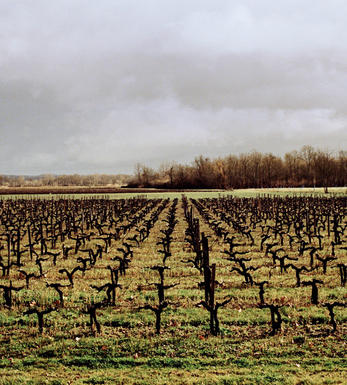
2019 Château Anthonic, Moulis-En-Médoc, Bordeaux

Critics reviews
Walnut and currant aromas with some blackberries. It’s medium-bodied with round tannins and a medium finish. Nicely done.
James Suckling, JamesSuckling.com (June 2020)
Unfussy bright berry fruits, plum and raspberry, from this organic estate owned by the Cordonnier family. This really grows on you as you sit with it, some gorgeous fresh juicy acidities and soft smoke, this feels well made without trying too hard.
Drink 2023 - 2038
Jane Anson, Decanter.com (May 2020)
About this WINE

Château Anthonic
Château Anthonic is a property in the Moulis-en-Médoc appellation on the Left Bank of Bordeaux, owned and run by Jean-Baptiste and Nathalie Cordonnier. The couple took over from Jean-Baptiste’s father, Pierre, in 1993.
The vineyard is planted to 62% Merlot, 29% Cabernet Sauvignon, 7% Cabernet Franc and 2% Petit Verdot. Three-quarters of the soils are composed of clay-limestone, explaining the dominance of Merlot.
The Cordonniers work with consultant oenologist Eric Boissenot, who consults for many top estates including the Médoc’s four First Growths.
The wine here has been certified organic since 2019. Biodiversity is important here: the Cordonniers practice agroforestry, planting trees among the vines. Of the estate’s 37 hectares, the vineyard itself covers 28 hectares. The rest is a mixture of woodland and meadow. They use bats instead of chemical insecticides.
Jean-Baptiste and Nathalie founded the Vignerons du Vivant movement in 2018; their aim is to provide training and work opportunities to underprivileged young people in the local area. The emphasis of the movement is on organic farming.

Bordeaux
Bordeaux remains the centre of the fine wine world. The maritime climate on the 45th parallel provides for temperate winters and long, warm summers, perfect conditions for growing grapes suited to the production of classically-constructed, long-lasting wines. This vast region of 120,000ha of vineyards (four times the size of Burgundy) is home to 10,000 wine producers and 57 different AOCs. Red now makes up 88 percent of Bordeaux wine, and is usually referred to as Claret. The origin of this name was to differentiate the lighter-coloured wines of the coastal region from the deeper "black" wines from up-country regions.
The Left Bank, comprising the wine regions of the Médoc, Pessac-Léognan and Graves are planted predominantly with Cabernet Sauvignon, which thrives on the gravelly soils left by the ancient course of the river. This is a thick-skinned variety which ripens late, producing powerful, tannic wines capable of long ageing. It is blended with Merlot, Cabernet Franc and sometimes Petit Verdot. The highlights of the Médoc are the four communes of St- Estèphe (blackcurrant concentration); classical, cedarwood and cigar-box Pauillac; richly-fruited St Julien; and elegant, fragrant Margaux.
On the Right Bank, most famously in St-Emilion and Pomerol, it is the fleshy Merlot grape which prevails, sometimes supported by Cabernet Franc. Here the soils are more mixed, with gravel and clay underpinning the rich, fruity wines of Pomerol. Styles vary more in St-Emilion, depending on the predominance of sand in the lower-lying slopes, or limestone on the hillsides and plateau.
By the 18th century, individual properties - known as châteaux, however humble - were becoming known for the quality of their wines and in 1855, those of the Médoc (plus Haut-Brion, a property commended by Samuel Pepys as early as 1663) were classified into five levels of classed growths. Lafite, Latour, Margaux and Haut Brion were cited as First Growths, to whose ranks Mouton Rothschild was elevated by presidential decree in 1973. Beneath the ranks of the classed growths lies a raft of fine châteaux known as Crus Bourgeois, while a host of less well-known "petits châteaux" still makes attractive, enjoyable Claret at affordable prices.
The other jewel in the Bordeaux crown is the district of Sauternes, making some of the most outstanding sweet white wines in the world (from the likes of Châteaux d'Yquem, Rieussec and Climens). The foggy autumn mornings along the banks of the Garonne River near Sauternes and neighbouring Barsac enable the noble rot, botrytis cinerea, to form on the skins of the grapes, which can still ripen in the afternoon sun as late as the end of October or early November. The Sémillon grape is the prime component, but Sauvignon Blanc and a little Muscadelle are also planted to provide insurance if the weather is less favourable to Sémillon, as well as offering a counterpoint in flavour.
There are many inexpensive dry white wines - more Sauvignon than Sémillon - from regions such as Entre-Deux-Mers and Graves, with just a handful of outstanding properties located in Pessac-Léognan. The most famous of the great dry whites hail from Châteaux Haut Brion, Laville Haut Brion and Domaine de Chevalier.
The finer wines of Bordeaux are sold en primeur in the late spring following the harvest, some two years before the wines are ready for physical delivery. The châteaux offer their wines through a system of Bordeaux négociants (brokers) who sell them on to importers round the world. Prices vary enormously from one vintage to another, dependent on perceived quality and world demand, which shows no signs of diminishing, especially for the great years.

Merlot
The most widely planted grape in Bordeaux and a grape that has been on a relentless expansion drive throughout the world in the last decade. Merlot is adaptable to most soils and is relatively simple to cultivate. It is a vigorous naturally high yielding grape that requires savage pruning - over-cropped Merlot-based wines are dilute and bland. It is also vital to pick at optimum ripeness as Merlot can quickly lose its varietal characteristics if harvested overripe.
In St.Emilion and Pomerol it withstands the moist clay rich soils far better than Cabernet grapes, and at it best produces opulently rich, plummy clarets with succulent fruitcake-like nuances. Le Pin, Pétrus and Clinet are examples of hedonistically rich Merlot wines at their very best. It also plays a key supporting role in filling out the middle palate of the Cabernet-dominated wines of the Médoc and Graves.
Merlot is now grown in virtually all wine growing countries and is particularly successful in California, Chile and Northern Italy.


Buying options
Add to wishlist
Description
A delicate expression of Left Bank Bordeaux, this shows fresh blueberry and blackberry aromas combined with a hint of clove. The palate shows a fresh and crunchy character, with redcurrants, graphite and ripe blackberries to the fore. A touch of white pepper and toast pull through on the finish, rounding out the wine. With a few more years in bottle this will gain more savoury complexity but can be enjoyed now with some pâté on toast, or a selection of hard cheeses. Drink now to 2030.
Barbara Drew MW, Content Manager, Berry Bros. & Rudd (September 2023)
wine at a glance
Delivery and quality guarantee